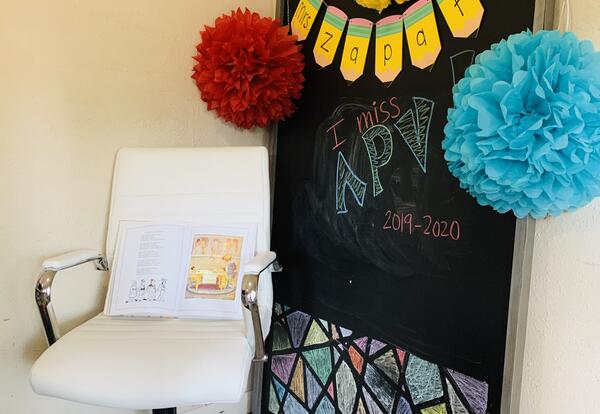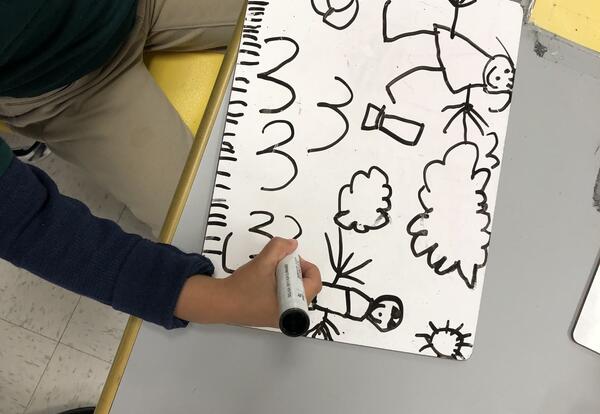Como profesor de Lectura y Escritura para alumnos de séptimo grado, he comprendido la importancia de leer y escribir correctamente. Después de aprender de manera incorrecta la estructura y pronunciación de un idioma, llevará años deshacer los errores que se han aprendido. La pronunciación afecta la fluidez, pero no garantiza la comprensión. El conocimiento del significado de las palabras, la estructura de las oraciones y las partes del discurso desempeñan un papel fundamental en la comprensión y escritura.
La mayoría de los textos están escritos en voz activa. En una oración en voz activa, la parte inicial es el sujeto, luego viene el verbo. Si el verbo es un verbo de acción, el sujeto y el verbo nos ayudan a encontrar la idea principal de la oración. Veamos el siguiente pasaje:
“Los leones emboscan a su presa que se acerca o se mueven con cuidado dentro del alcance para atacar. La carga final generalmente es de menos de 50 metros; más allá de eso, el león se sobrecalentará. Si la presa es capturada, el león muerde el morro o la garganta para asfixiarla. Los leones cazan en cooperación cuando enfrentan presas difíciles, como búfalos o jirafas. Pero los leones solo cooperan ocasionalmente cuando cazan presas que pueden ser capturadas fácilmente por un solo león. En esos casos, los compañeros de la manada generalmente se quedan atrás hasta que su compañero exitoso realiza la captura.”
Es importante que los estudiantes aprendan a reconocer la voz activa en los textos para comprender mejor la estructura de las oraciones y la organización de las ideas. Además, es esencial que desarrollen habilidades sólidas en el conocimiento de las partes del discurso y la comprensión del significado de las palabras para mejorar su comprensión lectora y su habilidad para expresarse por escrito de manera clara y efectiva.

The bolded parts of the sentences are the subjects and the verbs. Only by looking at the subject and the verb, we get a good indication that the main idea of the paragraph is ‘how do lions hunt for prey’. This strategy works especially when we skim the text before going to the questions.
How do we teach English Learners (ELs) to understand and acquire correct sentence structure? According to my experience as a teacher and as a former ESL student, a combination of deductive and inductive approach is the best way to teach correct sentence structures to ELs. A deductive approach can be used when introducing the sentence structure. Later on, the teacher can use the inductive approach to help students analyze patterns in sentence structures, thereby enabling the students to synthesize their own sentences.
What is a deductive and inductive approach? A deductive approach is more teacher-centered learning where the points of English grammar are explicitly stated to the students and then tested. Once the grammar is introduced and explained, students usually complete grammar exercises to become familiar with the pattern.
The inductive teaching approach in Teaching English to Students of Other Languages (TESOL) is a sort of discovery learning that focuses on the student. For example, an instructor might use or show a few examples of a grammar point in English, then ask students what they notice. In many cases, the grammar point might be introduced by simply engaging the students in a directed conversation. The teacher guides the students to notice the grammar pattern, and finally explicitly exposes them to it.
In the beginning of English as a Second Language (ESL) instruction, the teaching will follow cetrain steps. The teacher explains about subject/verb agreement and writes examples.
Ex. Birds fly.
Then the teacher asks the students to analyze the sentence to find parts of speech. Following this, the students are asked to synthesize same kind of sentences.
After that, the teacher can change the verb form and use singular and plural subjects to teach the subject verb agreement.
Ex. The bird flies.
Then, other forms of the verb can be added to make sentences with different tenses.
Ex.
The bird is flying.
The bird will be flying.
From this step, the teacher can go on adding other parts of the sentence structure to make longer simple sentences. Later on, sentences can be combined to form compound, complex, and compound-complex sentences.
Ms. Thomas
Middle School Teacher


